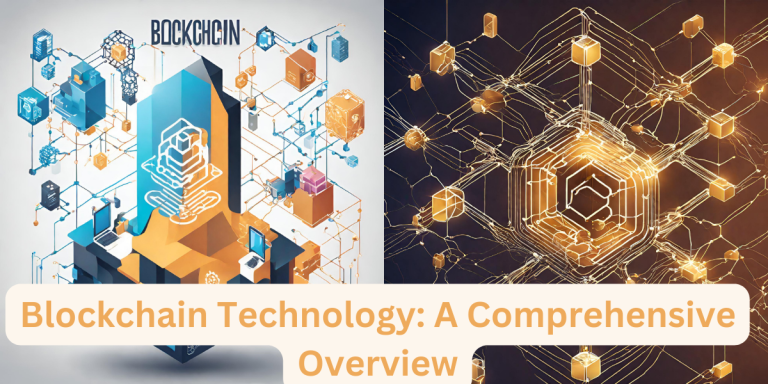Top 10 Artificial Intelligence (AI) Cryptocurrencies

Artificial Intelligence (AI) has been one of the most talked-about technologies in recent years. Its ability to revolutionize industries and improve efficiency has made it a sought-after technology. In the world of cryptocurrencies, AI has also been making waves. In this blog post, we will be discussing the top 10 AI cryptocurrencies that are making a name for themselves.
- SingularityNET (AGI)
SingularityNET is a decentralized platform that allows developers to create, share, and monetize AI services. It aims to democratize AI by making it accessible to everyone. The SingularityNET platform is powered by AGI tokens, which are used to pay for AI services. - Fetch.ai (FET)
Fetch.ai is a decentralized platform that enables the creation of autonomous agents that can perform tasks such as data analysis, prediction, and decision-making. The Fetch.ai platform is powered by FET tokens, which are used to pay for agent services. - Ocean Protocol (OCEAN) Ocean Protocol is a decentralized data exchange protocol that allows individuals and organizations to share and monetize data. The protocol leverages AI to provide data analytics and prediction services. The Ocean Protocol ecosystem is powered by OCEAN tokens, which are used to pay for data services.
- Numerai (NMR)
Numerai is a decentralized hedge fund that uses AI to make investment decisions. The platform allows data scientists to create predictive models using Numerai’s data and compete for rewards. The Numerai platform is powered by NMR tokens, which are used to pay for data services. - Cortex (CTXC)
Cortex is a decentralized AI platform that enables the creation of AI applications using smart contracts. The platform aims to make AI more accessible by providing developers with the tools to build AI applications without needing to understand the underlying technology. The Cortex platform is powered by CTXC tokens, which are used to pay for AI services. - DeepBrain Chain (DBC)
DeepBrain Chain is a decentralized AI computing platform that enables businesses to train and use AI models without needing to invest in expensive hardware. The DeepBrain Chain platform is powered by DBC tokens, which are used to pay for computing services. - Matrix AI Network (MAN)
Matrix AI Network is a decentralized platform that enables the creation of smart contracts using AI algorithms. The platform aims to make smart contracts more efficient and secure by leveraging AI technology. The Matrix AI Network ecosystem is powered by MAN tokens, which are used to pay for smart contract services. - Effect.AI (EFX)
Effect.AI is a decentralized platform that enables the creation of AI services such as natural language processing, image recognition, and data analysis. The Effect.AI platform is powered by EFX tokens, which are used to pay for AI services. - Neuromation (NTK)
Neuromation is a decentralized platform that provides AI services such as data labeling, image recognition, and object detection. The Neuromation platform is powered by NTK tokens, which are used to pay for AI services. - Endor Protocol (EDR)
Endor Protocol is a decentralized predictive analytics platform that enables businesses to make data-driven decisions using AI technology. The Endor Protocol ecosystem is powered by EDR tokens, which are used to pay for predictive analytics services.
In conclusion, these top 10 AI cryptocurrencies are paving the way for the future of AI and cryptocurrencies. As more businesses and individuals adopt AI technology, these platforms will become increasingly important in providing access to AI services. It will be exciting to see how these platforms evolve and contribute to the growth of the AI industry.
What’s an AI cryptocurrency?
An AI cryptocurrency refers to a cryptocurrency that utilizes artificial intelligence (AI) technology to enhance its functionality and operations. AI can be used in various aspects of cryptocurrency, such as trading, data analysis, security, and decision-making. For example, AI algorithms can be employed to predict market trends and make trading decisions, automate tasks, detect fraudulent activities, and improve the overall efficiency and accuracy of cryptocurrency systems. Some examples of AI cryptocurrencies include SingularityNET, DeepBrain Chain, and Cortex.
AI-based cryptocurrency trading
AI-based cryptocurrency trading refers to the use of artificial intelligence algorithms and machine learning techniques to make trading decisions in the cryptocurrency market. This approach involves analyzing large amounts of data, such as historical price patterns, market trends, news sentiment, and other relevant factors, to predict future price movements and execute trades accordingly.
AI-based cryptocurrency trading systems can automatically monitor multiple markets and cryptocurrencies simultaneously, identify potential trading opportunities, and execute trades with minimal human intervention. These systems aim to leverage the power of AI to make more accurate and timely trading decisions, potentially leading to higher profits and reduced risks.
However, it is important to note that AI-based cryptocurrency trading is not foolproof and carries its own risks. The cryptocurrency market is highly volatile and unpredictable, and even the most advanced AI algorithms may not always be able to accurately predict price movements. Traders should exercise caution and conduct thorough research before relying solely on AI-based trading systems.
Cryptocurrency trading algorithms
Cryptocurrency trading algorithms are computer programs that use mathematical models and data analysis techniques to make trading decisions in the cryptocurrency market. These algorithms are designed to automatically execute trades based on predefined rules and strategies.
There are several types of cryptocurrency trading algorithms, including:
- Trend-following algorithms: These algorithms identify and follow trends in the cryptocurrency market. They aim to buy when the price is rising and sell when the price is falling, with the expectation that the trend will continue.
- Mean-reversion algorithms: These algorithms take advantage of short-term price fluctuations by buying when the price is low and selling when the price is high. They assume that prices will eventually revert to their mean or average value.
- Arbitrage algorithms: These algorithms exploit price differences between different cryptocurrency exchanges. They buy a cryptocurrency on one exchange where the price is lower and sell it on another exchange where the price is higher, making a profit from the price discrepancy.
- Market-making algorithms: These algorithms provide liquidity to the market by placing both buy and sell orders at slightly higher and lower prices. They aim to profit from the spread between the bid and ask prices.
- Sentiment analysis algorithms: These algorithms analyze social media, news articles, and other sources of information to gauge market sentiment. They use this sentiment data to make trading decisions based on the expectation that positive sentiment will lead to price increases and negative sentiment will lead to price decreases.
These algorithms can be used by individual traders, hedge funds, and other institutional investors to automate their trading strategies and improve trading efficiency. However, it’s important to note that trading algorithms are not foolproof and can still be subject to market risks and unpredictable events
